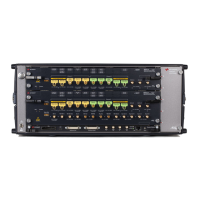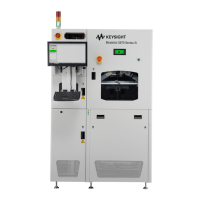182 Keysight InfiniiVision 2000 X-Series Oscilloscopes User's Guide
14 Measurements
To make automatic measurements
1 Press the [Meas] key to display the Measurement Menu.
2 Press the Source softkey to select the channel, running math function, or
reference waveform to be measured.
Only channels, math functions, or reference waveforms that are displayed are
available for measurements.
3 Press the Type softkey then rotate the Entry knob to select a measurement to be
made.
If a portion of the waveform required for a measurement is not displayed or does not display
enough resolution to make the measurement (approximately 4% of full scale), the result will
display "No Edges", "Clipped", "Low Signal" (not enough amplitude), "< value", or "> value",
or a similar message to indicate that the measurement may not be reliable.
